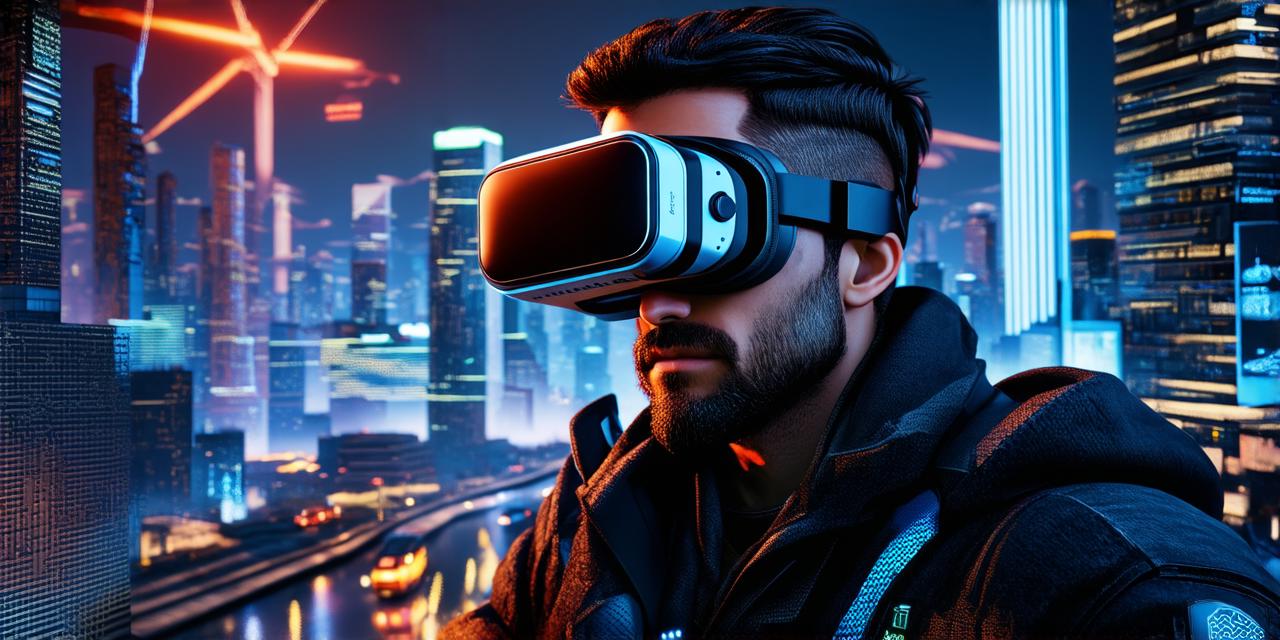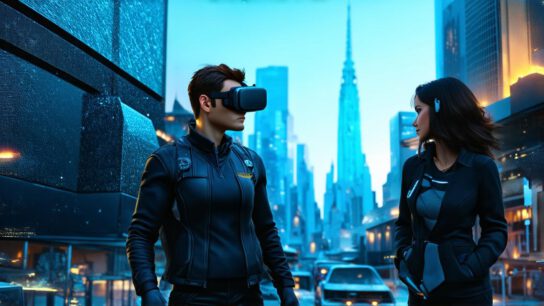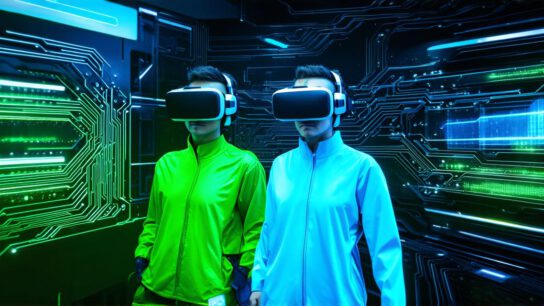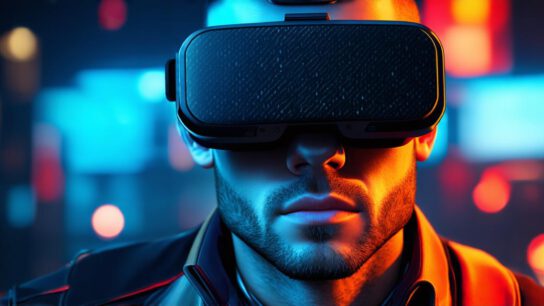The Impact of Virtual Reality on Society
Virtual reality technology allows us to create immersive experiences that can be used for a wide range of purposes. From entertainment to training, VR has shown great potential in transforming various industries. Let’s take a closer look at some of the ways VR is impacting society:
-
Entertainment: The rise of virtual reality technology has brought about a new era of gaming. With VR headsets and controllers, gamers can immerse themselves in a fully interactive gaming experience. This has led to the creation of new games that are more engaging and realistic than ever before. In addition to gaming, VR is also being used for movies and other forms of entertainment. For example, some movie theaters now offer 360-degree screenings that allow viewers to feel like they’re part of the action.
-
Education: Virtual reality technology has the potential to revolutionize education by providing students with immersive learning experiences. With VR, students can explore historical sites, conduct experiments in virtual labs, and even practice surgical procedures. This technology can also be used to provide language lessons and other forms of language training. For example, a student learning Spanish could practice ordering food at a restaurant in a virtual environment.
-
Healthcare: Virtual reality technology is being used in healthcare to train medical professionals and simulate surgeries. In addition, VR therapy has been shown to be effective in treating anxiety disorders and phobias. For example, a patient with a fear of heights could use VR therapy to confront their fear in a controlled environment.
-
Real Estate: Virtual reality technology is being used in real estate to give potential buyers and renters an immersive experience of properties they’re interested in. This allows buyers and renters to see properties in greater detail and make more informed decisions. In addition, VR can be used to create virtual tours of properties that are located far away or difficult to access.
-
Tourism: Virtual reality technology is also being used in the tourism industry to allow people to explore destinations they may never have had the opportunity to visit. For example, a person could use VR to take a virtual tour of the Great Wall of China or the Pyramids of Giza. This can be especially useful for people with disabilities who may not be able to travel physically.
-
Training and Simulation: Virtual reality technology is being used in industries such as aviation, military, and emergency services to simulate real-life scenarios. This allows trainees to practice their skills in a safe and controlled environment without the risk of injury or damage to equipment.
-
Accessibility: Virtual reality technology can be used to create accessible environments for people with disabilities. For example, VR can be used to create virtual environments that are accessible to people who use wheelchairs or have mobility impairments. This allows people with disabilities to participate in activities and experiences that they may not have been able to otherwise.
The Future of Virtual Reality
Virtual reality technology is still in its early stages, but it has shown great potential in transforming various industries. As the technology continues to evolve, we can expect to see even more innovative uses for VR.
-
More immersive gaming experiences: With advancements in technology, we can expect to see even more immersive gaming experiences that blur the line between reality and fiction. This could include games that allow players to explore entire worlds or games that use haptic feedback to make players feel like they’re really inside the game.
-
Virtual education: VR technology has the potential to revolutionize education by providing students with even more immersive learning experiences. For example, students could take virtual field trips to historical sites or conduct experiments in virtual labs that are impossible to replicate in real life.
-
Telemedicine: VR technology is being used in healthcare to provide telemedicine services, allowing patients to receive medical care from the comfort of their own homes. This could include virtual consultations with doctors, remote monitoring of patients, and even remote surgery.
-
Virtual travel: As virtual reality technology continues to evolve, we can expect to see more immersive travel experiences that allow people to explore destinations they may never have had the opportunity to visit. This could include virtual tours of museums, historical sites, and other cultural landmarks.
-
Augmented reality: While virtual reality focuses on creating fully immersive environments, augmented reality (AR) technology allows us to overlay digital information onto the real world. AR technology has already been used in industries such as marketing and advertising, but we can expect to see even more innovative uses for this technology in the future.
-
Virtual events: With virtual reality technology, we can expect to see more immersive events such as concerts, festivals, and other cultural gatherings. These events could be streamed live in 360-degree environments, allowing people from all over the world to participate in the experience.
Summary
Virtual reality technology has shown great potential in transforming various industries. From entertainment to education and healthcare, VR has shown that it can make a real difference in our lives. As the technology continues to evolve, we can expect to see even more innovative uses for VR in the future. Whether you’re a developer, a student, or just someone who’s interested in technology, virtual reality is definitely worth exploring. So, go ahead and take a leap into the virtual world and discover what it has to offer!
FAQs
1. What are some common uses for virtual reality technology?
- Virtual reality technology can be used for entertainment, education, healthcare, real estate, tourism, training and simulation, accessibility, and more.
2. How does virtual reality technology work?
- Virtual reality technology works by creating a fully immersive environment that simulates the user’s surroundings in a digital world. This is achieved through the use of headsets and other specialized equipment.
3. Is virtual reality technology safe?
- Virtual reality technology is generally safe, but it’s important to follow proper safety guidelines when using VR equipment. This includes wearing appropriate safety gear and not using VR for extended periods of time.
4. How does virtual reality technology impact our brains?
- Virtual reality technology can have a positive impact on our brains by stimulating the release of neurotransmitters such as dopamine, which is associated with pleasure and reward. This can lead to feelings of relaxation and improved mood.
5. What are some potential risks associated with virtual reality technology?
- Some potential risks associated with virtual reality technology include motion sickness, eye strain, and disorientation. In addition, prolonged use of VR equipment can lead to headaches and other physical discomforts. It’s important to follow proper safety guidelines when using VR technology to minimize these risks.



